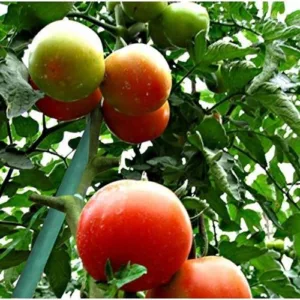Introduction
Are you looking for a sturdy and reliable support system for your tomato plants? Look no further than 1/4″ fiberglass stakes. In this ultimate guide, Unicomposite pultruded profiles will explore everything you need to know about using fiberglass stakes for your tomato plants. From understanding the benefits to selecting the right type and installing them properly, we’ve got you covered. So let’s dive in!

1 4 fiberglass stakes
What are Fiberglass Stakes?
Fiberglass stakes are slender rods made from a composite material of fiberglass and resin. They are designed to provide support and stability to plants, particularly in situations where they need extra support to grow vertically. The 1/4″ diameter is a popular choice for tomato plants as it offers optimal strength without being overly bulky.
Benefits of Fiberglass Stakes
- Durability: Fiberglass stakes are highly durable and can withstand harsh weather conditions. Unlike traditional wooden stakes that can rot or metal stakes that may rust, fiberglass stakes are resistant to these issues, ensuring a longer lifespan.
- Flexibility: Fiberglass stakes have a slight flex to them, allowing them to withstand strong winds without snapping. This flexibility is especially important for tomato plants, which can become top-heavy as they grow.
- Lightweight: Compared to other stake materials, fiberglass stakes are lightweight and easy to handle. This makes installation and maintenance hassle-free.
- Non-conductive: Fiberglass is non-conductive, which means it won’t interfere with the electrical conductivity of the soil. This property makes fiberglass stakes an ideal choice for gardeners using electronic watering systems.
Types of Fiberglass Stakes
- Solid Fiberglass Stakes: These stakes are made entirely of fiberglass material and provide excellent strength and stability. They are suitable for heavy-duty applications or when extra support is required.
- Hollow Fiberglass Stakes: Hollow stakes are lightweight and offer flexibility. They are ideal for supporting plants that require gentle support or in areas with less wind exposure.
- UV-Resistant Fiberglass Stakes: These stakes are coated with a UV-resistant material, protecting them from the sun’s harmful rays. They are a great option for outdoor applications, as they won’t degrade or discolor over time.
Factors to Consider When Choosing Fiberglass Stakes
- Plant Size: Consider the height and weight of your tomato plants when selecting the appropriate stake length and thickness. Taller and heavier plants may require sturdier stakes.
- Growing Conditions: Assess the environmental conditions in your garden, such as wind intensity and sun exposure. Opt for stakes that can withstand the specific conditions your tomato plants will face.
- Installation Method: Determine whether you prefer to drive the stakes into the ground or secure them to a trellis system. Choose stakes with the appropriate design for your preferred installation method.
- Budget: Set a budget for your stakes and select options that offer the best balance between quality and affordability.
How to Install Fiberglass Stakes for Tomato Plants
- Prepare the Soil: Loosen the soil around your tomato plants to make it easier to insert the stakes without damaging the roots.
- Position the Stakes: Place the stakes alongside the tomato plants, ensuring they are close enough to provide proper support without interfering with the plant’s growth.
- Drive the Stakes: Gently push the stakes into the ground, ensuring they are securely anchored. Use a rubber mallet or a wooden block to avoid damaging the stakes.
- Secure the Plants: Tie the tomato plants to the stakes using soft garden twine or plant ties. Avoid tying them too tightly to allow room for growth and movement.
- Regular Maintenance: Regularly inspect the stakes and adjust the ties as the plants grow. Make sure the ties are not causing any damage to the stems.
Maintaining Fiberglass Stakes
- Clean the stakes regularly by wiping them with a damp cloth to remove dirt and debris.
- Inspect the stakes for any signs of damage or wear. Replace any broken or weakened stakes promptly.
- Store the stakes in a dry and protected area during the offseason to extend their lifespan.
Common Mistakes to Avoid
- Using stakes that are too short or thin for the size of your tomato plants.
- Tying the plants too tightly, which can restrict growth and cause damage.
- Neglecting to check the stakes regularly for damage or instability.
- Failing to properly secure the stakes in the ground, leading to instability during strong winds.
- Leaving the stakes in the ground after the growing season, which can cause them to deteriorate over time.
Conclusion
Using 1/4″ fiberglass stakes for your tomato plants can provide the necessary support for healthy and productive growth. Their durability, flexibility, and lightweight nature make them an excellent choice for gardeners. Remember to choose the right type of stakes based on your specific requirements and follow proper installation and maintenance practices. By doing so, you’ll enjoy sturdy and thriving tomato plants season after season.
FAQs
- Can fiberglass stakes be reused for multiple growing seasons?
- Yes, fiberglass stakes can be reused for several seasons if they are in good condition. Regular inspection and maintenance are key to prolonging their lifespan.
- Are fiberglass stakes suitable for other types of plants besides tomatoes?
- Absolutely! Fiberglass stakes can provide support for various plants, including peppers, beans, cucumbers, and other vining crops.
- Can I cut fiberglass stakes to a shorter length if needed?
- Yes, fiberglass stakes can be easily cut to the desired length using a fine-toothed saw or a hacksaw. Just make sure to wear protective goggles and gloves while cutting.
- Are there any alternatives to fiberglass stakes?
- Yes, alternative options include wooden stakes, metal stakes, and bamboo stakes. Each has its own set of advantages and considerations.
- Can fiberglass stakes be used in containers or raised beds?
- Yes, fiberglass stakes can be used in containers or raised beds. Ensure they are securely anchored to provide adequate support to the plants.
 info@unicomposite.com
info@unicomposite.com


























